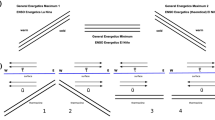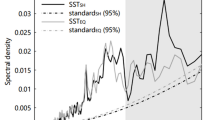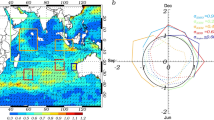It is now well known that there is a strong association of the extremes of the Indian summer monsoon rainfall (ISMR) with the El Niño and southern oscillation (ENSO) and the Equatorial Indian Ocean Oscillation (EQUINOO), later being an east–west oscillation in convection anomaly over the equatorial Indian Ocean. So far, the index used for EQUINOO is EQWIN, which is based on the surface zonal wind over the central equatorial Indian Ocean. Since the most important attribute of EQUINOO is the oscillation in convection/precipitation, we believe that the indices based on convection or precipitation would be more appropriate. Continuous and reliable data on outgoing longwave radiation (OLR), and satellite derived precipitation are now available from 1979 onwards. Hence, in this paper, we introduce new indices for EQUINOO, based on the difference in the anomaly of OLR/precipitation between eastern and western parts of the equatorial Indian Ocean. We show that the strong association of extremes of the Indian summer monsoon with ENSO and EQUINOO is also seen when the new indices are used to represent EQUINOO.



Similar content being viewed by others
References
Bacmeister J T and Suarez M J 2002 Wind stress simulations and the equatorial momentum budget in an AGCM; J. Atmos. Sci. 59 3051–3073.
Boschat G, Pascal Terray and Sebastien Masson 2012 Robustness of SST teleconnections and precursory patterns associated with the Indian summer monsoon; Clim. Dynam. 38 2143–2165, doi: 10.1007/s00382-011-1100-7.
Chiang J C, Zebiak S E and Cane M A 2001 Relative roles of elevated heating and surface temperature gradients in driving anomalous surface winds over tropical oceans; J. Atmos. Sci. 58 1371–1394.
Francis P A and Gadgil Sulochana 2010 Towards understanding the unusual Indian monsoon in 2009; J. Earth Syst. Sci. 119(4) 397–415.
Gadgil Sulochana and Francis P A 2012 Oceans and the Indian monsoon; Monsoon Monograph 2 India Meteorological Department.
Gadgil Sulochana, Rajeevan M and Francis P A 2007 Monsoon variability: Links to major oscillations over the equatorial Pacific and Indian oceans; Curr. Sci. 93(2) 182.
Gadgil Sulochana, Vinayachandran P N and Francis P A 2003 Droughts of Indian summer monsoon: Role of clouds over the Indian Ocean; Curr. Sci. 85 1713–1719.
Gadgil Sulochana, Vinayachandran P N, Francis P A and Sidharata Gadgil 2004 Extremes of the Indian summer monsoon rainfall, ENSO and the equatorial Indian Ocean Oscillation; Geophys. Res. Lett. 31(L1) 2213, doi: 10.1029/2004GL019733.
Gill A E 1980 Some simple solutions for heat induced tropical circulation; Quart. J. Roy. Meteorol. Soc. 106 447–462.
Godfrey J S, Johnson G C, McPhaden M J, Reverdin G and Wijffels S 2001 The tropical ocean circulation; In: Ocean Circulation and Climate (eds) Church J, Gould J and Siedler G, (Academic, London), pp. 215–224.
Ihara C, Kushnir Y, Cane M A and Pena V H D L 2007 Indian summer monsoon rainfall and its link with ENSO and Indian Ocean climate indices; Int. J. Climatol. 27 179–187.
Kalnay E et al. 1996 The NCEP/NCAR 40-year reanalysis project; Bull. Am. Meteorol. Soc. 2 437– 471.
Liebmann B and Smith C A 1996 Description of a complete outgoing longwave radiation dataset; Bull. Am. Meteorol. Soc. 77 1275–1277.
Lindzen R S and Nigam S 1987 On the role of sea surface temperature gradients in forcing low level winds and convergence in the tropics; J. Atmos. Sci. 44 2418–2436.
Miyama T, McCreary J P Jr, Jensen T G, Loschnigg J, Godfrey S and Ishida A 2003 Structure and dynamics of the Indian Ocean cross-equatorial cell; Deep-Sea Res. Part II 50 2023–2047.
Parthasarathy B, Munot A A and Kothawale D R 1995 Monthly and seasonal rainfall series for all-India homogeneous regions and meteorological subdivisions, Indian Institute of Tropical Meteorology, Pune, India, pp. 1871–1994.
Rajeevan M, Unnikrishnan C K and Preethi B 2012 Evaluation of the ENSEMBLES multi-model seasonal forecasts of Indian summer monsoon variability; Clim. Dynam. 38 2257–2274, doi: 10.1007/s00382-011-1061-x.
Rasmusson E M and Carpenter T H 1983 The relationship between eastern equatorial Pacific sea surface temperatures and rainfall over India and Sri Lanka; Mon. Weather Rev. 111 517–528.
Saji N H, Goswami B N, Vinayachandran P N and Yamagata T 1999 A dipole mode in the tropical Indian Ocean; Nature 401 360–363.
Schott F A, Xie S P and McCreary J P 2009 Indian Ocean circulation and climate variability; Rev. Geophys. 47 RG1002, doi: 10.1029/2007RG000245.
Sikka D R 1980 Some aspects of the large-scale fluctuations of summer monsoon rainfall over India in relation to fluctuations in the planetary and regional scale circulation parameters; Proc. Indian Acad. Sci. (Earth Planet. Sci.) 89 179–195.
Sobel A H 2007 Simple models of ensemble-averaged tropical precipitation and surface wind, given the sea surface temperature in the global circulation of the atmosphere, (eds) Schneider T and Sobel A H, Priceton University Press, pp. 219–252.
Vinayachandran P N, Francis P A and Rao S A 2009 Indian Ocean dipole: Processes and impacts; In: Current Trends in Science (ed.) Mukunda N, Indian Academy of Sciences, Bangalore.
Webster P J 1972 Response of the tropical atmosphere to local steady forcing; Mon. Weather Rev. 100 518–541.
Worley S J, Woodruff S D, Reynolds R W, Lubker S J and Lott N 2005 ICOADS release 2.1 data and products; Int. J. Climatol. 25 823–842.
Xie and Arkin 1996 Analyses of global monthly precipitation using gauge observations, satellite estimates, and numerical model predictions; J. Climate 9 840–858.
Author information
Authors and Affiliations
Corresponding author
Rights and permissions
About this article
Cite this article
FRANCIS, P.A., GADGIL, S. A note on new indices for the equatorial Indian Ocean oscillation. J Earth Syst Sci 122, 1005–1011 (2013). https://doi.org/10.1007/s12040-013-0320-0
Received:
Revised:
Accepted:
Published:
Issue Date:
DOI: https://doi.org/10.1007/s12040-013-0320-0




